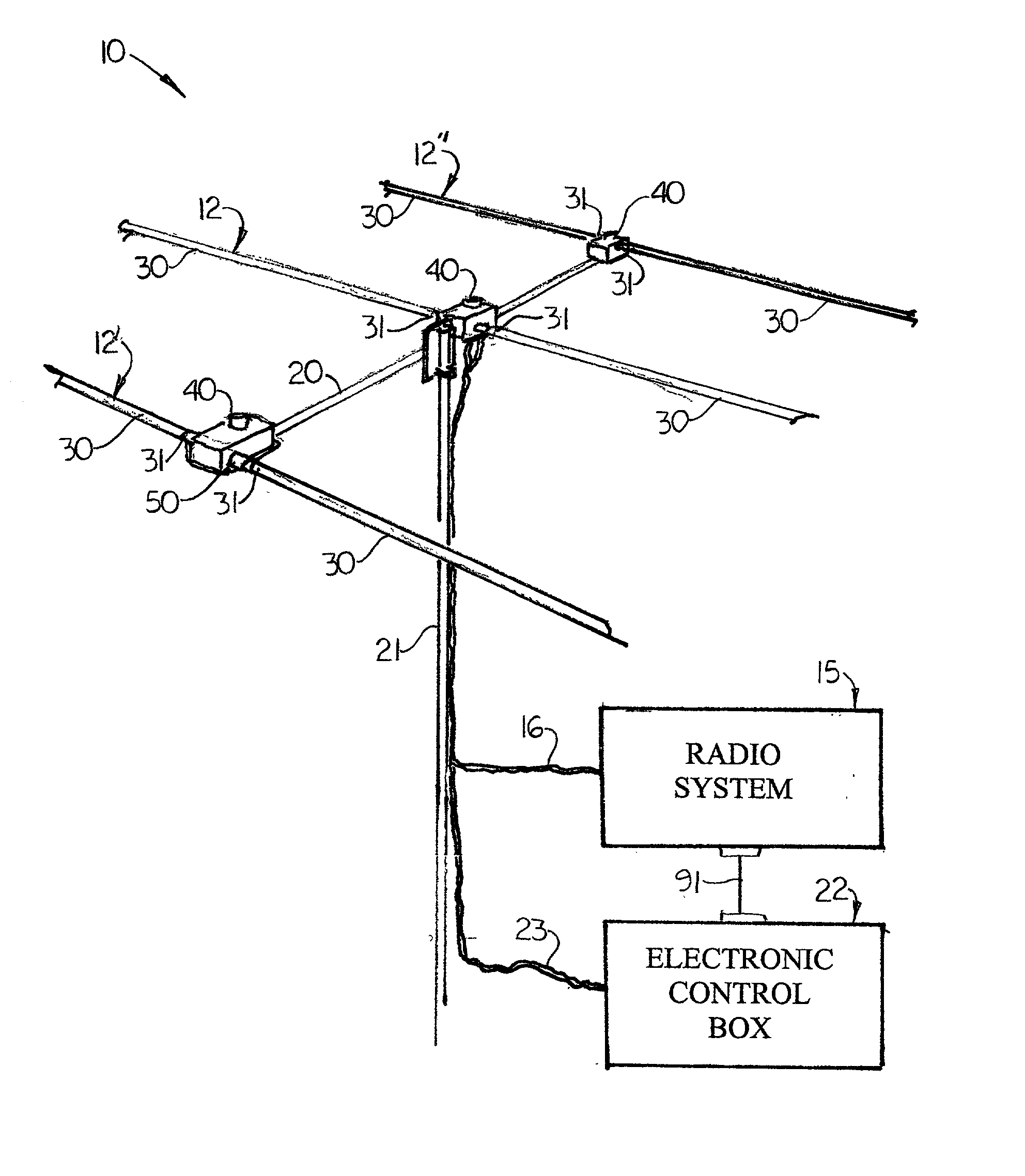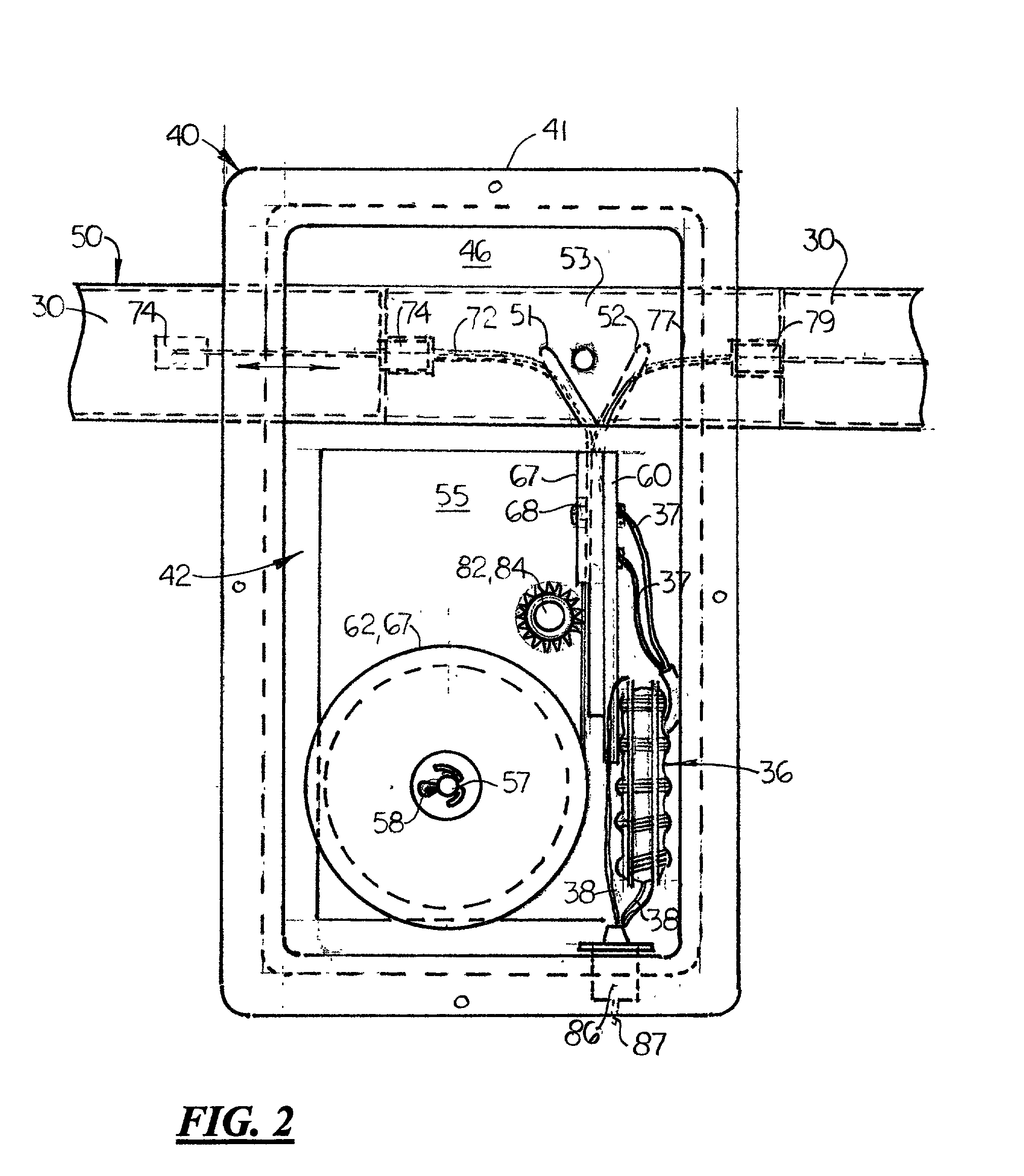Tunable antenna system
a technology of antenna system and antenna array, applied in the field of radio antennas, can solve the problems of inability to optimally tune, large and complex array of antenna designs, and low performan
- Summary
- Abstract
- Description
- Claims
- Application Information
AI Technical Summary
Benefits of technology
Problems solved by technology
Method used
Image
Examples
first embodiment
[0040] In the first embodiment, the elements 12 are fixed, elongated hollow support arms 30 that are circular in cross-section, approximately 11 / 2 inches in diameter (O.D.), and 18 feet in length. The support arms are made of fiberglass. As stated above, the proximal end 31 of each support arm 30 is inserted into the end of a cylindrical shaped receiver 50 that extends transversely through the front section of the housing unit 40. The support arm 30 is approximately 11 / 2 inches in diameter (O.D.) and fits snuggly into the receiver 50. A suitable bolt and nuts are used to attach the receiver 50 to the housing unit 40. Formed on the receiver 50 are curved slots 51, 52 through which the conductive members 72, 77 extend to enter the support arms 30. One conductive member 72 enters one support arm 30 while the other conductive member 77 enters the opposite support arm 30. Located inside the receiver 50 is the non-conducting diverter 53 with two opposite curved slots 54 formed therein. Fo...
second embodiment
[0041] In a second embodiment, shown in FIG. 6, the support arms 30 are telescopically designed to adjust in length to the length of the conductive member 72, 77. In the preferred embodiment, there are four 4-foot sections 32-35 each slightly smaller than the other so that the sections 32-35 may be longitudinally aligned and telescopically adjusted in length. Attached to the distal end of the last section 35 is a non-conductive cap 39 that attaches to the distal end of the conductive member 72 or 77. When the conductive member 72, 77 is moved inside the support arm 30, the sections 32-35 telescopically move so that the overall length of the support arm 30 is approximately equal to the length of the conductive member 72, 77.
[0042] During operation, the operator may use the electronic control unit 22 to perform some of the following functions:
[0043] 1. Single button band selection includes the ability to scroll through the band in segments of approximately 100 kHz by repeatedly hittin...
PUM
 Login to View More
Login to View More Abstract
Description
Claims
Application Information
 Login to View More
Login to View More - R&D
- Intellectual Property
- Life Sciences
- Materials
- Tech Scout
- Unparalleled Data Quality
- Higher Quality Content
- 60% Fewer Hallucinations
Browse by: Latest US Patents, China's latest patents, Technical Efficacy Thesaurus, Application Domain, Technology Topic, Popular Technical Reports.
© 2025 PatSnap. All rights reserved.Legal|Privacy policy|Modern Slavery Act Transparency Statement|Sitemap|About US| Contact US: help@patsnap.com



